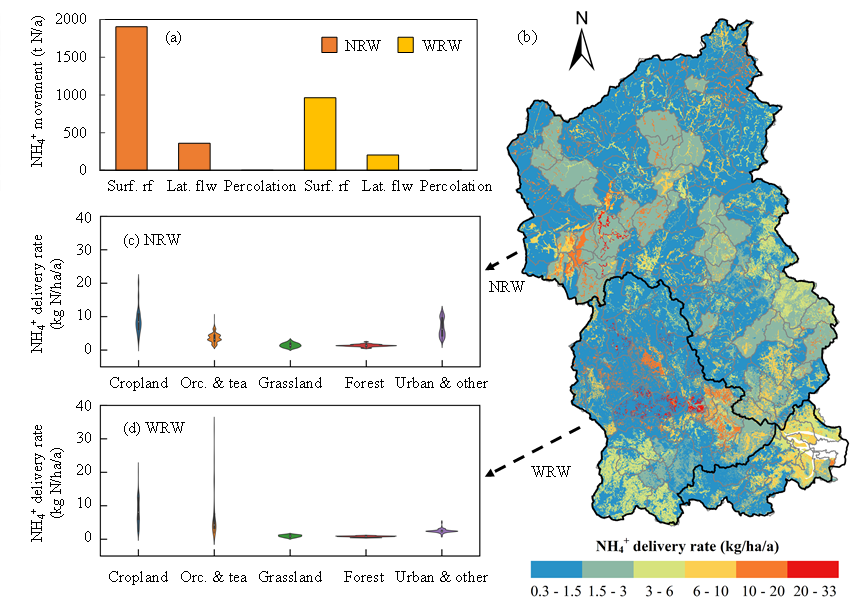Watershed water quality modeling is a valuable tool for managing ammonium (NH4+) pollution. However, simulating NH4+ pollution presents unique challenges due to the inherent instability of NH4+ in natural environment. This study modified the widely-used Soil and Water Assessment Tool (SWAT) model to simulate non-point source (NPS) NH4+ processes, specifically incorporating the simulation of land-to-water NH4+ delivery. The Jiulong River Watershed (JRW) is the study area, a coastal watershed in Southeast China with substantial sewage discharge, livestock farming, and fertilizer application. The results demonstrate that the modified model can effectively simulate the NPS NH4+ processes. It is recommended to use multiple sets of observations to calibrate NH4+ simulation to enhance model reliability. Despite constituting a minor proportion (5.6 %), point source inputs significantly contribute to NH4+ load at watershed outlet (32.4∼51.9 %), while NPS inputs contribute 15.3∼17.3 % of NH4+ loads. NH4+ primarily enters water through surface runoff and lateral flow, with negligible leaching. Average NH4+ land-to-water delivery rate is about 2.35 to 2.90 kg N/ha/a. High delivery rates mainly occur at agricultural areas. Notably, proposed NH4+ mitigation measures, including urban sewage treatment enhancement, livestock manure management improvement, and fertilizer application reduction, demonstrate potential to collectively reduce the NH4+ load at watershed outlet by 1/4 to 1/3 and significantly enhance water quality standard compliance frequency. Insights gained from modeling experience in the JRW offer valuable implications for NH4+ modeling and management in regions with similar climates and significant anthropogenic nitrogen inputs.

Han, F., Tian, Q., Chen, N.W.*, Hu, Z.P., Wang, Y., Xiong, R., Xu, P., Liu, W., Stehr, A., Barra, R.O., and Zheng, Y. (2024). Assessing ammonium pollution and mitigation measures through a modified watershed non-point source model. Water Research, 254: 121372
https://linkinghub.elsevier.com/retrieve/pii/S0043135424002744